Among the many enormous and record-breaking displays at the 1893 World’s Columbian Exposition, none were astronomical as the Yerkes Telescope. The historic telescope has been on view to the public, and in service to scientists, for the past 120 years while housed in the Yerkes Observatory in Williams Bay, Wisconsin, a beautiful building designed by World’s Fair architect Henry Ives Cobb. The observatory and treasured telescope face an uncertain future as the University of Chicago ceases operations of the facility in October 2018.
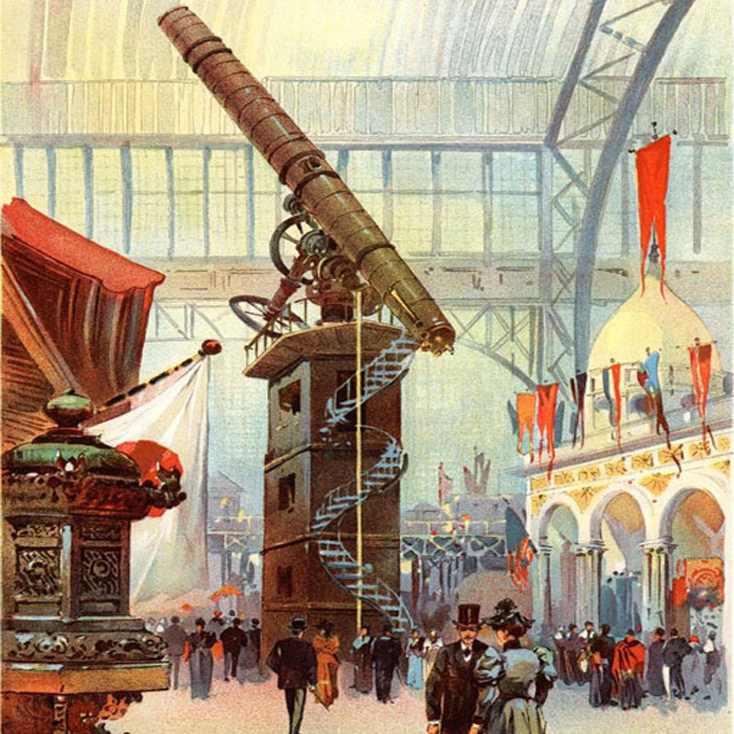
A painting of the Yerkes Telescope by Charles Graham.
This description of the Yerkes Telescope display comes from the October 1893 issue of World’s Columbian Exposition Illustrated.
THE YERKES’ TELESCOPE
An exhibit that attracts much attention and many comments stands in the north end of the Manufactures building. Thousands of visitors at the Fair pass into the building every day, and the first object that greets them is a square steel column, rising up from the floor to a height of about forty feet. As their eyes follow this column from the bottom up they behold a mass of wheels, having the appearance of the interior mechanism of a clock. Suspended on an axis is a huge tube, which looks for all the world like one of the big cannons in the Government building.
At last they have found the great Krupp gun they have read so much about. At least that is what a great many people at once observe to themselves or to their friends. As they move around in order to get a better view, they suddenly come across the following inscription written on one side of the frame-work: “The Yerkes’ Telescope, Presented to the Chicago University by Charles T. Yerkes.”
This great revealer of the solar system has a double interest for everybody, from the fact that it is the largest telescope in the world and has been presented to what promises to be the greatest university in this country. The column it rests upon is forty-three feet high and weighs fifty tons. The polar axis of steel is fifteen inches in diameter and weighs three and one-half tons, while the declination axis also of steel, is twelve inches in diameter and weighs one and one-half tons. The main driving wheel is eight feet in diameter and the driving clock, which moves the great tube, weighs one and one-half tons. The object glass is forty inches in diameter, the largest ever made, and weighs, with the cell, 750 pounds. The tube is 64 feet in length and 12 inches in diameter. The total weight of the entire piece of mechanism is 75 tons.
This telescope is the gift of Charles T. Yerkes, of Chicago, who is president of the North and West Side Street Railway companies, to the University of Chicago. At the close of the Fair the instrument will be re moved to Lake Geneva, Wisconsin, this location being decided upon from the fact of it being away from the dust and smoke of the city, which would have made its use almost impossible.
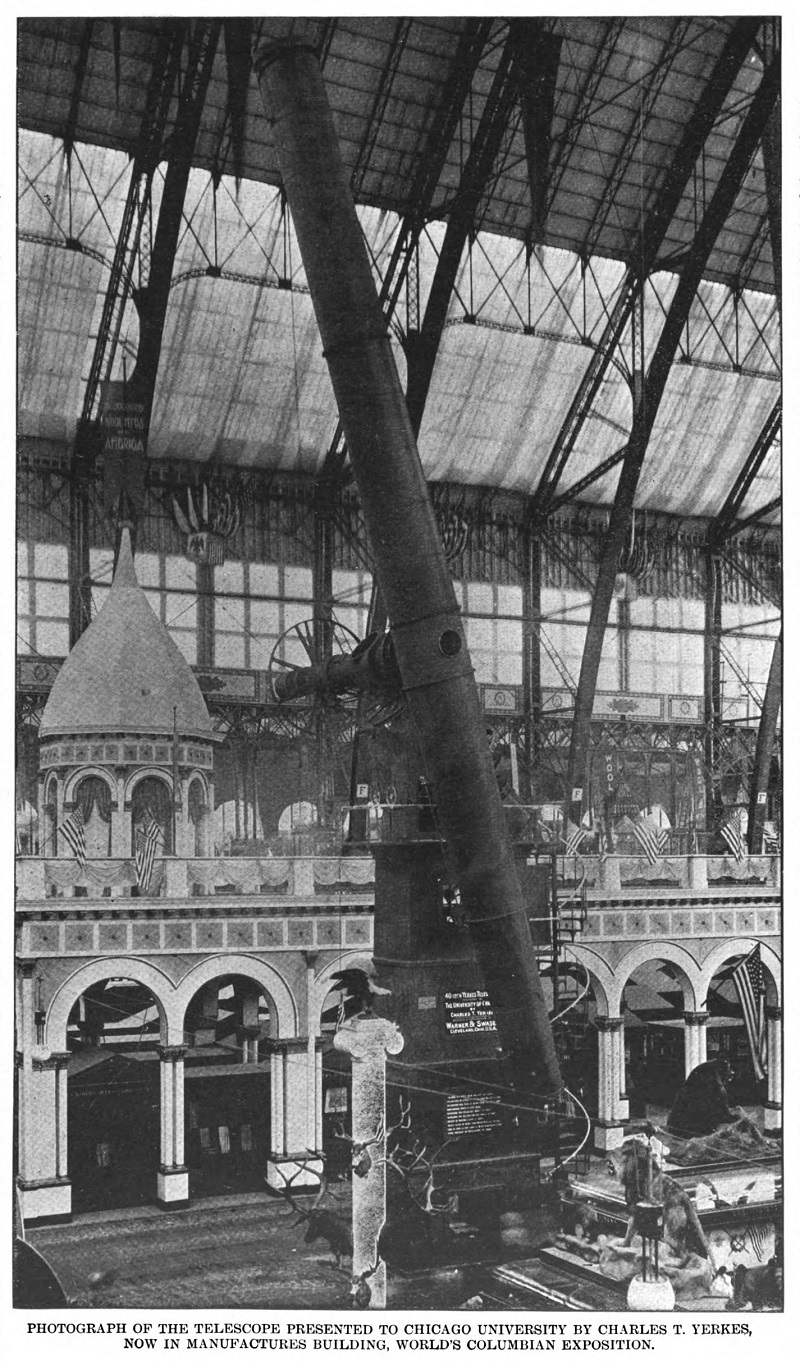
The Yerkes Telescope in the Manufactures and Liberal Arts Building. [Image from World’s Columbian Exposition Illustrated, October 1893.]
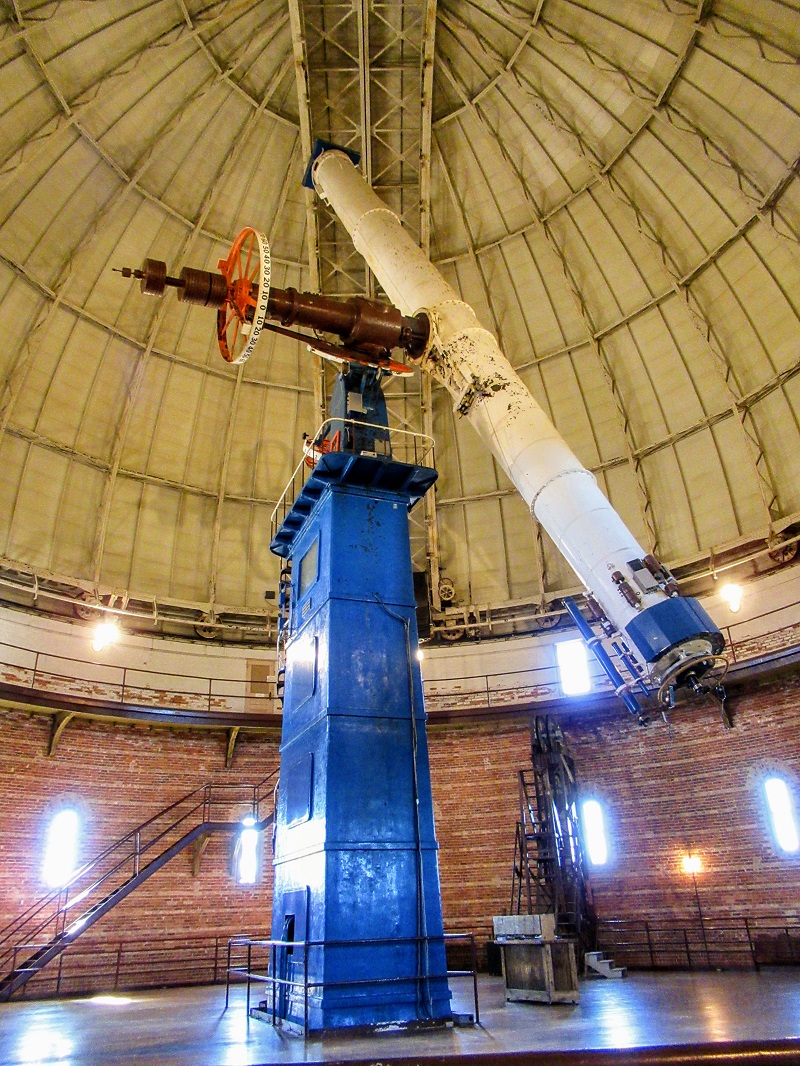
The Yerkes Telescope in 2017.

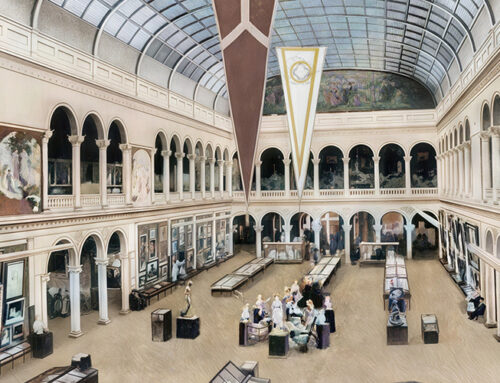
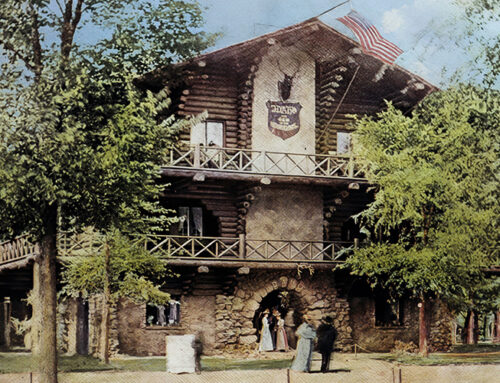

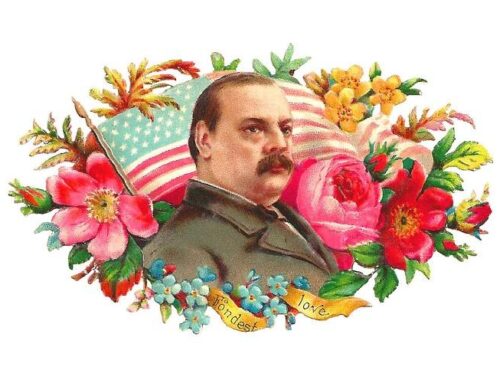

Leave A Comment